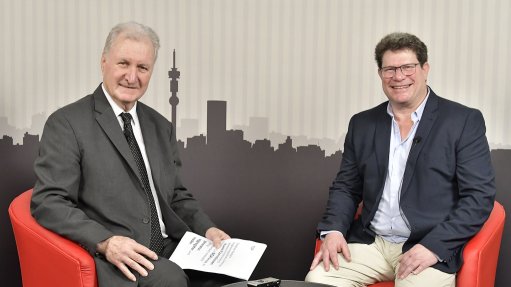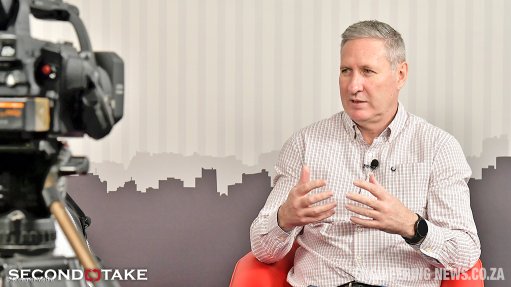Renewables to overtake coal as largest electricity source, as demand grows in 2026 – IEA
Global electricity demand is expected to expand at one of the fastest sustained paces in more than a decade despite ongoing economic pressures, with renewables, natural gas and nuclear all contributing to meet the additional demand, international organisation the International Energy Agency (IEA) says.
Renewables are expected to overtake coal as the world’s largest source of electricity as early as this year or by 2026 at the latest, depending on weather and fuel price trends, the agency says in its 'Electricity Mid-Year Update 2025' report.
“The growth in global electricity demand is set to remain robust through 2026, despite an uncertain economic backdrop,” says IEA energy markets and security director Keisuke Sadamori.
“The strong expansion of renewables and nuclear is steadily reshaping electricity markets in many regions. However, this must be matched by greater investment in grids, storage and other sources of flexibility to ensure power systems can meet the growing demand securely and affordably,” he says.
Electricity demand is set to increase by 3.3% this year and by 3.7% in 2026, which is more than twice as fast as total energy demand growth over the same period, the report shows.
Demand is increasing for electricity to power factories and appliances, keep buildings cool, operate growing fleets of data centres, run electric vehicles and more.
While the latest forecasts for global electricity demand growth this year and next are a deceleration from the 4.4% surge recorded in 2024, they remain well above the 2015 to 2023 average of 2.6%, the agency notes.
Further, nuclear power output is expected to reach record highs, driven by reactor restarts in Japan, robust output in the US and France and new additions, mainly in Asia.
The steady increase in gas-fired power generation is set to continue displacing coal and oil in the power sector in many regions, it adds.
Owing to these developments, CO2 emissions from electricity generation are currently forecast to plateau this year and record a slight decline in 2026, although weather and economic conditions could affect that trajectory, the IEA says.
DEMAND AND PRICES
Emerging economies in Asia account for the bulk of global electricity demand growth. China and India are expected to drive 60% of the increase in global electricity consumption over 2025 and 2026.
Demand growth is forecast to accelerate to 5.7% in China in 2026 from 5% this year and 6.6% in India next year, up from 4% this year.
Additionally, in the US, the rapid expansion of data centres is expected to keep yearly electricity demand growth above 2% this year and next, which is more than double the average growth rate over the past decade.
By contrast, electricity consumption in the EU is set to grow more slowly this year at about 1%, though a modest acceleration is expected in 2026, the report shows.
During the first half of this year, wholesale electricity prices in the EU and the US rose by 30% to 40% from the same period a year earlier, largely owing to higher natural gas prices amid a tighter global gas market.
“While average power prices remained below the 2023 annual levels in these markets, they were above the levels seen in 2019,” the IEA report notes.
Electricity prices still vary considerably across different regions, with implications for industrial sectors, it adds.
Average electricity prices for energy-intensive industries in the EU are still double those in the US and significantly higher than in China. These cost differences continue to pose challenges to the competitiveness of energy-intensive industries in the EU, the report highlights.
Meanwhile, the frequency of negative wholesale prices is increasing in various markets, which underscores the need for greater flexibility in supply and demand. Additionally, where appropriate, regulatory frameworks and market designs to boost greater demand response and energy storage will be essential.
Article Enquiry
Email Article
Save Article
Feedback
To advertise email advertising@creamermedia.co.za or click here
Comments
Press Office
Announcements
What's On
Subscribe to improve your user experience...
Option 1 (equivalent of R125 a month):
Receive a weekly copy of Creamer Media's Engineering News & Mining Weekly magazine
(print copy for those in South Africa and e-magazine for those outside of South Africa)
Receive daily email newsletters
Access to full search results
Access archive of magazine back copies
Access to Projects in Progress
Access to ONE Research Report of your choice in PDF format
Option 2 (equivalent of R375 a month):
All benefits from Option 1
PLUS
Access to Creamer Media's Research Channel Africa for ALL Research Reports, in PDF format, on various industrial and mining sectors
including Electricity; Water; Energy Transition; Hydrogen; Roads, Rail and Ports; Coal; Gold; Platinum; Battery Metals; etc.
Already a subscriber?
Forgotten your password?
Receive weekly copy of Creamer Media's Engineering News & Mining Weekly magazine (print copy for those in South Africa and e-magazine for those outside of South Africa)
➕
Recieve daily email newsletters
➕
Access to full search results
➕
Access archive of magazine back copies
➕
Access to Projects in Progress
➕
Access to ONE Research Report of your choice in PDF format
RESEARCH CHANNEL AFRICA
R4500 (equivalent of R375 a month)
SUBSCRIBEAll benefits from Option 1
➕
Access to Creamer Media's Research Channel Africa for ALL Research Reports on various industrial and mining sectors, in PDF format, including on:
Electricity
➕
Water
➕
Energy Transition
➕
Hydrogen
➕
Roads, Rail and Ports
➕
Coal
➕
Gold
➕
Platinum
➕
Battery Metals
➕
etc.
Receive all benefits from Option 1 or Option 2 delivered to numerous people at your company
➕
Multiple User names and Passwords for simultaneous log-ins
➕
Intranet integration access to all in your organisation

















